Earl posted up on the shallow lip of a drop-off, his rod armed with a long, skinny streamer that Alaskan rainbows can't seem to ignore. Stretched out below him was an epic tailout that any die-hard fly angler would kill to fish — long and deep and two beats slower than the shallow riffle above it.
I watched Earl intently. The potential was epic, particularly here, in the wilds of Bristol Bay, where rainbows as long as your arm are common. And he knew it. He just needed the right swing at the right speed. And, common sense dictated, in order to reach the trophy rainbows in the run, he needed to go deep.
But Earl wasn't the only fisherman I was watching.
Hovering downstream over the very same run Earl was preparing to fish, a half-dozen-strong flock of Arctic terns glared into the deep, green water. With wings beating faster as they intensified their frenetic search for a meal, it was easy to see what they were after. Now and then, the birds would dive into the river and levitate off the chop with a mouthful of protein in the form of sockeye salmon fry that were, in good time, making their way to the sea, where they'd soon become part of one of the most impressive migrations on the planet.
It was mid-June. The little fish were on their way downstream to the salt. Chances are, before they reached the ocean, they'd pass the next generation of spawners on their way up the river to propagate the next batch of salmon.
The terns offered up an important clue to the rainbow trout angler at the top of the run. The fry were heading downstream — tail first — and they weren't holding deep. In fact, they were holding at the top of the water column. If you believed the birds, that is. Earl made his cast, and let the swift water grab his floating fly line and yank it downstream, putting the fly in "the zone."
Earlier that day, in a similar situation, I noticed the birds paying undue attention to my own streamer as it raced through a tailout. Once, a very interested bird dove on my fly and made contact, letting me know that my fly was likely right where it needed to be. I didn't hook the sharp-featured little predator, thankfully. Instead, I gave out some line to drop my fly a bit deeper so the tern would lose interest.
But the clue was unmistakable. The sockeye fry were near the surface, and the river's big-shouldered rainbow trout likely knew that, too.
Over the course of a week, Earl and I, who timed our visit to Bristol Bay to arrive before the run of reds pushed upstream, saw lots of rising fish. The idea was to be in Alaska after the fry migration but before the sockeye return — it can be a magical couple of weeks when the region's giant rainbows eat traditional trout food, like stoneflies and caddisflies and big Green Drakes … and mice.
But we were early. Or the fry run was late. The only anglers who nailed the timing were the terns. And they were feasting.
Did we see rising fish? Absolutely. But the big rainbows weren't rising to bugs or skated mice. They were crashing fry from below. Just like the terns were plucking the hapless young salmon from above.
And Earl? His big, long streamer that doesn't look much like a salmon fry at all, skated just under the choppy, green surface of the river. I watched as one of the terns started to follow Earl's fly, but the bird was too late.
From beneath, a 22-inch rainbow sliced through the fry migration and nailed the fly. The big fish cartwheeled once and then skyrocketed into the Alaskan afternoon.
It was a lesson from the birds — the fry guys of Bristol Bay — to the angler at the lip of the run. The terns were the teachers that day.
And Earl was a willing student.




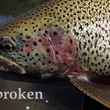
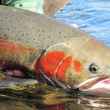
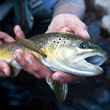
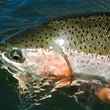



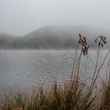
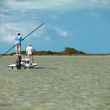



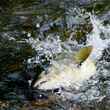
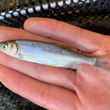




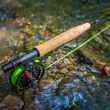



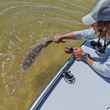



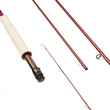

Comments